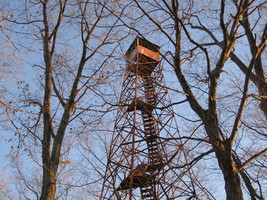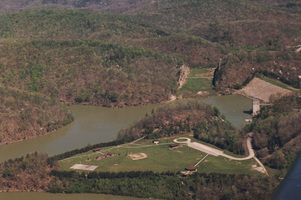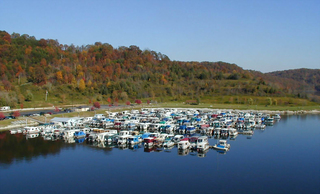 | Back to e-WV
| Back to e-WV
 The West Virginia Encyclopedia
The West Virginia Encyclopedia
 | Back to e-WV
| Back to e-WV
 The West Virginia Encyclopedia
The West Virginia Encyclopedia















Wayne County was established January 18, 1842, from part of Cabell County. It was named for General ‘‘Mad Anthony’’ Wayne, a Revolutionary War hero who later defeated Ohio Indian tribes at the 1794 Battle of Fallen Timbers. Wayne County lies in the juncture of two of West Virginia’s major rivers, the Big Sandy and the Ohio.
Wayne is the county seat of Wayne County. Founded in 1842, the town came into existence at the same time as the county.
Ceredo was founded in 1857 as an antislavery experiment by a group headed by Eli Thayer, a congressman from Massachusetts.
Kenova, located in the point between the Ohio and the Big Sandy rivers, is the westernmost town in West Virginia. The name is formed from the names of the three states that neighbor each other there, Kentucky, Ohio, and West Virginia. Kenove is home to Dreamland pool, which opened in 1925.

Beech Fork Lake, located in Cabell and Wayne counties, was constructed by the U.S. Army Corps of Engineers and opened to the public in 1978.
Cabwaylingo State Forest takes its name from four neighboring counties, Cabell, Wayne, Lincoln, and Mingo. The state bought the forest’s 8,123 acres in 1935.

The Big Sandy River travels through an area of thick forest, rugged terrain, and bituminous coal mining.
The Tug Fork of the Big Sandy River forms the southwestern border of West Virginia for nearly 90 miles, flowing between the West Virginia counties of Mingo and Wayne and neighboring counties in Virginia and Kentucky.
The Ohio River begins at Pittsburgh, with the union of the Allegheny and Monongahela rivers. From there the Ohio travels 981 miles to Cairo, Illinois, where it joins the Mississippi.
Camden Park is West Virginia’s only amusement park.
East Lynn Lake was created by an earthen dam on the East Fork of Twelvepole Creek.

Beech Fork Lake was constructed by the U.S. Army Corps of Engineers and opened to the public in 1978. The lake was created by damming the Beech and Miller forks of Twelvepole Creek.

The Midland Trail is the national east-west automobile route constructed in the 1930s, designated as U.S. 60 and crossing the center of America from the Chesapeake Bay to the Pacific Ocean. In West Virginia, the Midland Trail was the first state-maintained highway.
The portion of U.S. 52 in southern West Virginia that runs between Kenova in Wayne County and Williamson in Mingo County is often called the Tolsia Highway.
Tri-State Airport offers airline service to passengers from a large area of West Virginia, Kentucky, and Ohio. The airport was dedicated November 2, 1952.